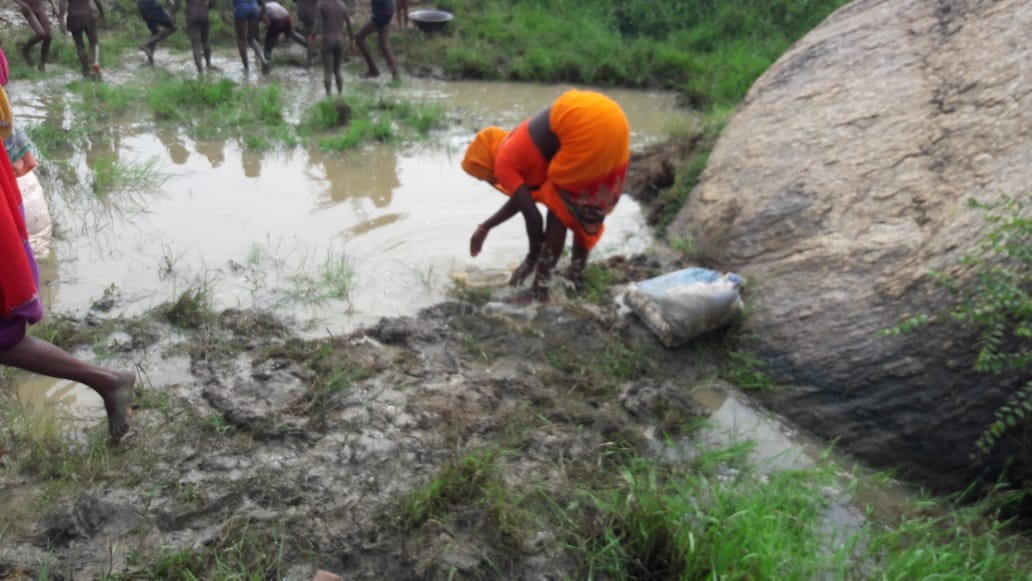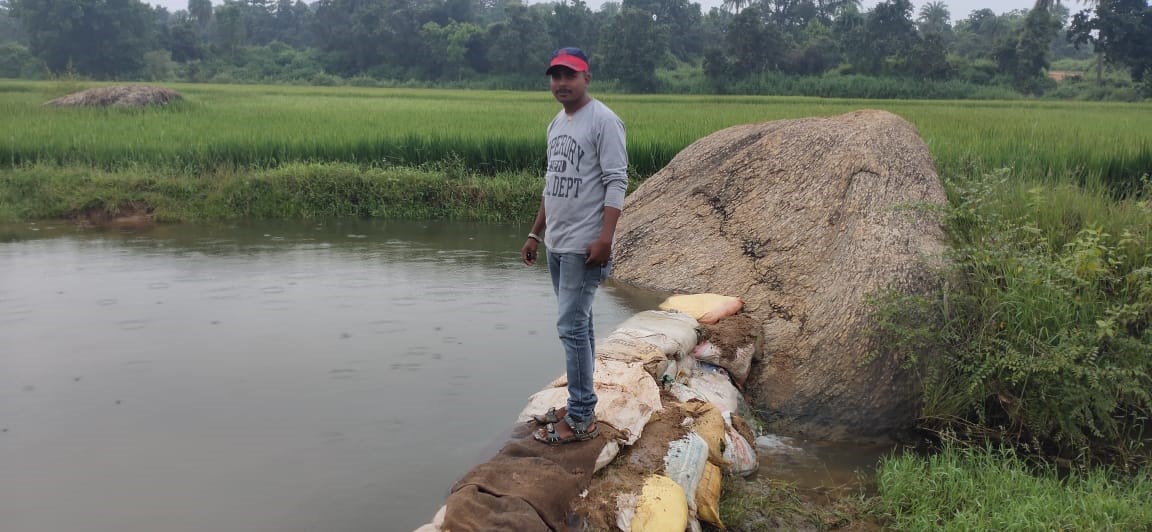India’s monsoons provide relief from oppressive heat but, more importantly, they provide sustenance for millions. A timely and sufficient monsoon is critical for farmers but, increasingly, monsoons are becoming unreliable because of climate change. Exacerbating this is a set of policies that encourage water wastage, deepening the water crisis that threatens the lives and livelihoods of millions in rural India.
Kairakura is a village in Godda district, Jharkhand that has faced drought for a number of years. Agriculture is the village’s primary means of livelihood but the water crisis and absence of harvesting structures forced the villagers to depend on rainfed agriculture. Most farmers migrate seasonally to nearby cities and towns in search of labour work in factories or construction sites. They only stay to cultivate paddy fields and vegetables during the Kharif season (July-October). There is no water available for the Rabi season (October-March).
In July 2016, Lok Kalyan Seva Kendra began a project named Creating Livelihood Adaptation under Drought (CLAD) with the support of the Indo-Global Social Service Society (IGSSS), a non-profit organisation working for the development, capacity building and enlightenment of marginalised communities. LKSK previously formed the Women Watch Group (WWG) and empowered them to take ownership of resources and build the community’s resilience.
After conducting regular meetings and training on resilience building, The Women Watch Group, along with the community, submitted a proposal to Jharkland government’s Community Development Block asking for the construction of a water harvesting structure in the village to access water for daily chores as well as for irrigation during Rabi Season. The Block Development Officer took no action.

While waiting for a response, we suggested that the group’s leading women and community members construct a low-cost Bori-Bandh (water reserve) in the village. After identifying a site where water flows perennially (which is called Joriyain) we explained to the benefits of a Bori-Bandh and how it could be constructed through cooperation with other villages. Initially, the community – especially its male members – did not agree to contribute resources of their own and asked for material like bags and sand. But after support from the Women’s Watch Group, all households in Kairakura village gave four cement bags to construct the Bori-Bandh. Now, after seeing the increased water storage, the village’s male members have decided to contribute by raising the height of Bori-Bandh to store more water for irrigation and other purposes.
To learn more about Lok Kalyan Seva Kendra’s work, visit their website or follow them on Twitter, Facebook and Instagram.
